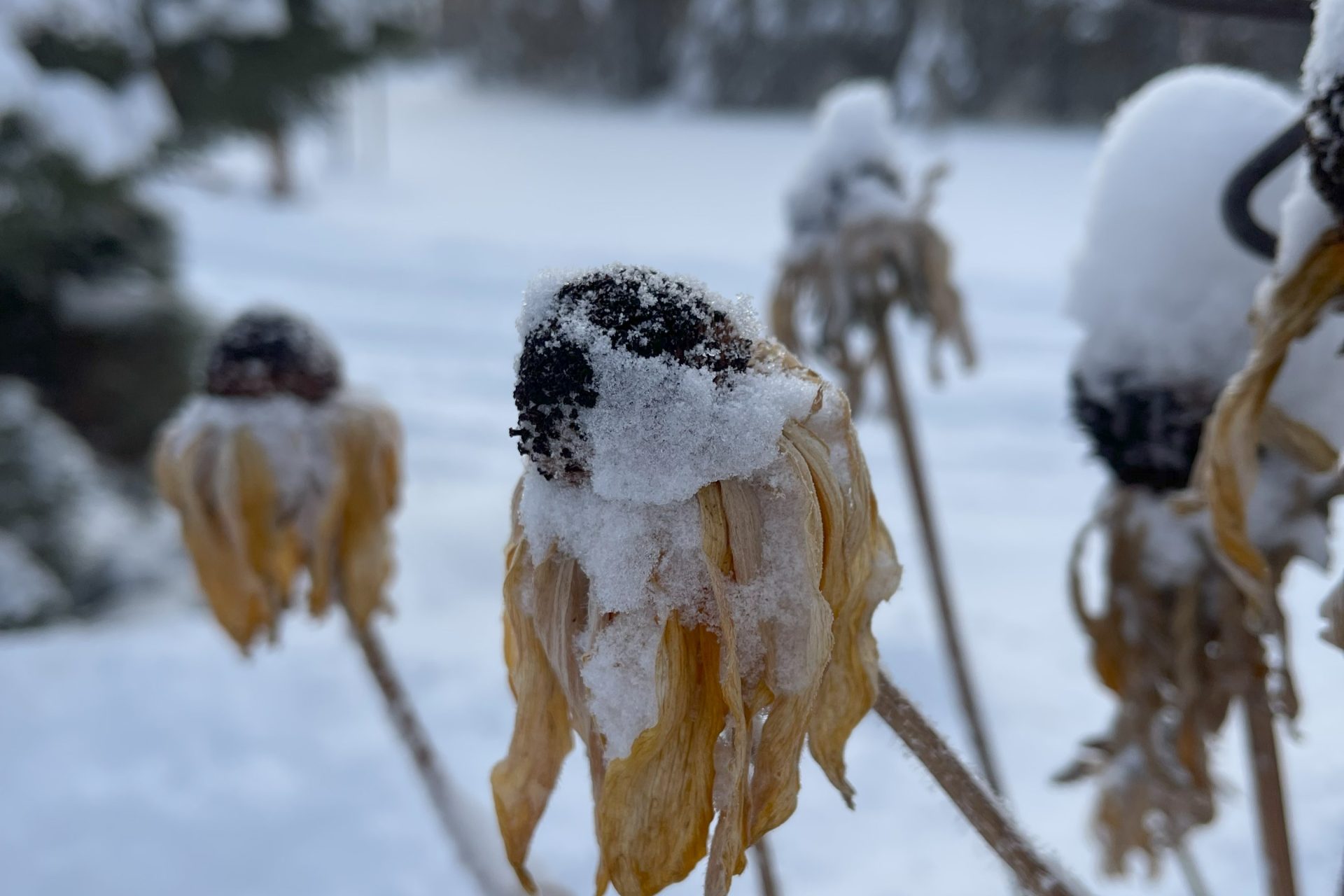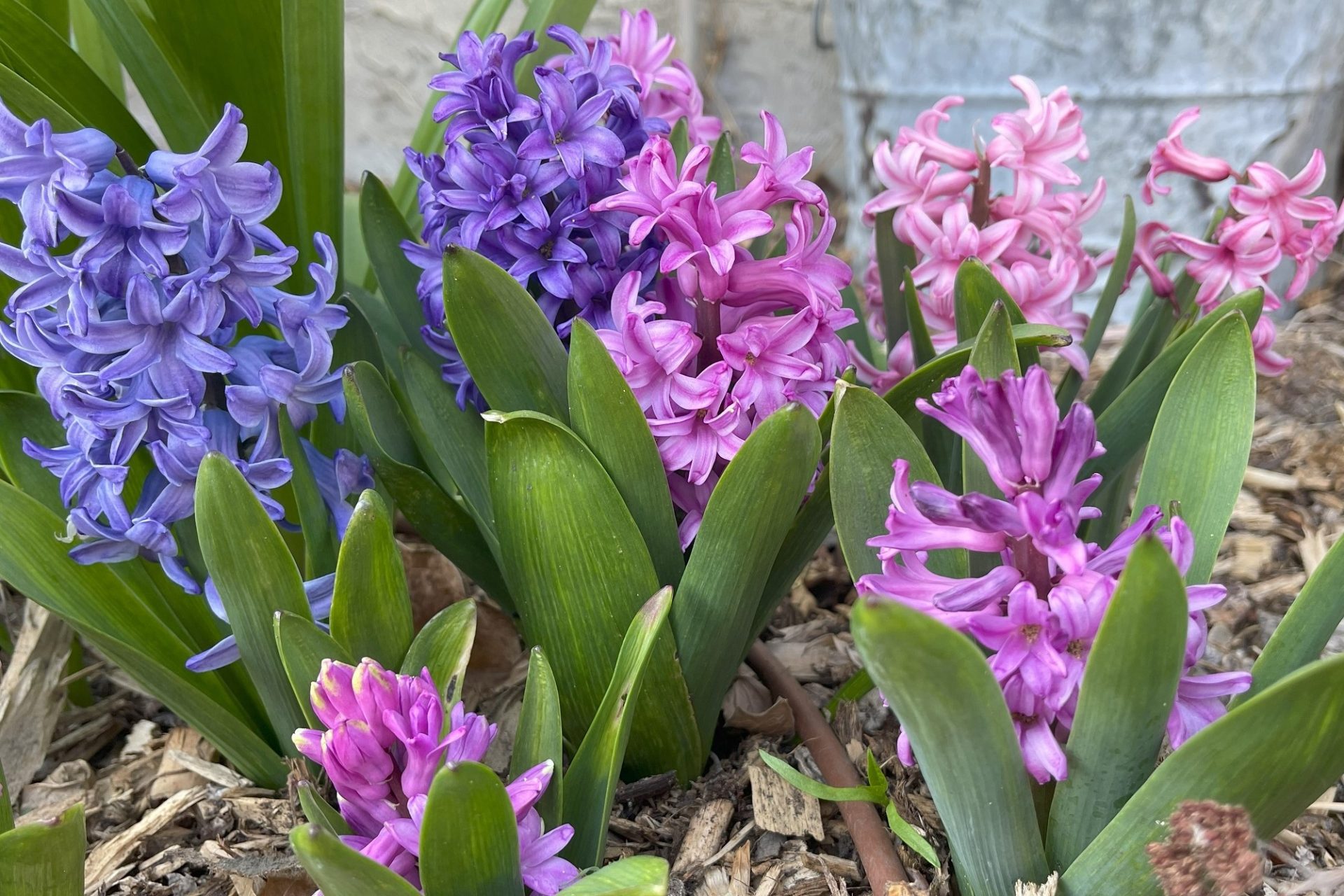Avoiding Winter Thaw Worries
Gardening is a four-season endeavour. For us in the north, it’s usually a quiet time, but we still need to watch the perennial garden when winter temperatures sometimes warm above freezing.
As winter temperatures fluctuate and we experience unexpected thaws, our beloved perennials may face some challenges.
While snow typically acts as a protective insulator for their roots, unseasonal temperature swings can disrupt this delicate balance, and it’s important to understand how to safeguard our perennials during a winter thaw, ensuring their survival and thriving when spring arrives.
This blog post will explore effective strategies and practical tips to protect your perennials during these unpredictable weather patterns.
Let’s dive in and learn how to navigate the potential pitfalls of winter thaws and nurture our plants for a successful growing season ahead.

Want the inside scoop on more gardening tips? Get early access to all my blogs and exclusive content by signing up for my newsletter!
Understanding the Impact of Temperature Swings on Perennials

Unseasonal temperature swings can wreak havoc on perennials during winter. One day, the sun is shining, and the next day, a blast of arctic air arrives, causing confusion and stress for our plants.
Understanding the impact of these temperature swings on perennials is crucial if we want to safeguard their well-being and ensure they thrive come spring.
Exposure to extreme cold followed by sudden warmth can lead to a phenomenon known as freeze-thaw cycles.
When the temperature rises rapidly after a cold spell and the frozen soil thaws, it can cause perennials to de-acclimate.
A warm spell that occurs too early in winter can trigger premature growth, making the plant vulnerable to subsequent freezes.
On the other hand, a sudden cold snap after a period of warmth can catch plants off guard and cause damage.
Let’s explore approaches that protect perennial gardens from wild temperature fluctuations before winter sets in and during an actual winter thaw.
Strategies for Providing Proper Insulation for Your Perennials Before Winter Arrives

Prevention is always the best approach when facing a potential challenge, which goes for gardening, too.
This section will quickly review steps to protect perennials before winter arrives, like using mulch, grouping perennials, planting near buildings, hydrating perennials in the fall, and choosing the right perennials for your growing zone.
You can find my complete guide on how to get perennial gardens for winter in my blog called How to Prepare Perennials for Winter.
1. How Mulch Protects Perennials During the Winter

One of the most effective ways to safeguard your plants is by providing them with proper insulation.
Insulation acts as a protective barrier, shielding perennials from frost and extreme cold temperatures, ensuring their survival and promoting healthy growth come spring.
To protect your perennials from unpredictable temperature swings, consider using mulch as insulation.
Mulch acts as a natural insulator, helping to regulate soil temperature and retain moisture.
When applying mulch, spread it evenly, creating a layer around 8-10 cm (2-3″) thick.
Mulch will help to keep the soil temperature more consistent, reduce the impact of temperature fluctuations, and protect the roots of your perennials.
Related: For more on mulch, hop over to my blog called What is Mulch? Making Garden Magic with Mulch.
Another effective way to add additional insulation to your perennials is by using protective coverings, including frost blankets or burlap wraps.
These coverings create a barrier between your plants and the harsh winter conditions, providing an extra insulation layer.
Secure the coverings tightly around your perennials, protecting them from cold winds and potential frost damage.
2. Group Perennials Together

There is an advantage in planting perennials together.
Clustering plants can create a microclimate that helps retain heat and provides mutual protection and can be especially beneficial for more delicate varieties that may be more susceptible to cold temperatures.
3. Water Perennials Well in the Fall

Well-hydrated perennials weather climatic conditions better than those that are dehydrated.
Dehydrated plants enter winter already stressed, which reduces their ability to withstand winter’s onslaught. It is best to water perennials regularly in the fall until the ground freezes.
4. Plant Perennials Near a Building or Structure

Heated and nonheated buildings and structures like fences and windbreaks offer protection from inclement weather.
Plant any tender perennials near structures to help decrease the effects of winter winds and temperatures.
5. Select Cold-Tolerant Perennial Varieties

When it comes to safeguarding your perennials from unpredictable temperature swings during a winter thaw, choosing cold-hardy varieties is key.
This is a given for the seasoned perennial grower, but to those newer to perennial gardening, this may be new.
Many cold-hardy perennials are naturally occurring, and some are specially bred to withstand fluctuating temperatures and harsh winter conditions.
When selecting your perennial plants, look for those labelled to be hardy to your specific USDA hardiness zone. These plants have built-in mechanisms that help protect them from freezing temperatures in zones 3-4, such as deep root systems and sturdy foliage, and they have been tested and proven to survive in your region’s climate.
Related: For a more detailed description of growing zones, see What are Plant Hardiness Zones & What do They Mean?
By choosing frost-resistant perennial varieties, you can ensure that your garden will continue to thrive even during unexpected temperature swings, providing you with peace of mind and a beautiful landscape all year round.
Providing Perennials Protection During a Winter Thaw Period

Unseasonal temperature swings, such as the January and February thaws, can disrupt sleeping perennials. With temperatures rising above freezing, taking proactive measures to protect your perennials during this vulnerable time is valuable.
In northern climates of plant hardiness zones 1-4, snow is our superpower, and the key is to harness it.
As a protective insulator, snow shields perennial roots from extreme cold and even excessive warmth.

Snow, particularly fluffy snow, insulates well because of its air to water ratio. Snow is 90-96% air between ice crystals, which makes it very effective at reducing the impact of cold temperatures on soil and plant life.
Snow keeps perennial roots from getting too cold and even too warm during winter.
Warm winter temperature swings where temperatures rise above freezing cause the depth of the snow cover to shrink dramatically in perennial gardens.
The snow will also pull away from sidewalk edges and building walls.
If the snow loss is dramatic, it can cause plants to de-acclimate before the threat of severe freezing is over.

❄️ If you see the snow layer thinning on your perennial gardens, add more snow!
If you run short of snow near your gardens, harvest some from another part of your yard, load it in a wheelbarrow, toboggan, or wagon, and top up your gardens to keep the perennials frozen and dormant.
If you run out of snow, adding more mulch to your perennial gardens will help to safeguard perennials from untimely mild temperatures.
Conclusion
In this blog post, we explored the potential challenges a winter thaw can pose to perennials.
While snow typically acts as an insulator that protects perennial roots from extreme temperatures, unseasonal temperature swings, such as January and February thaws, can disrupt this delicate balance.
I hope these insights and tips on protecting your perennials during these fluctuations have helped ensure their survival and health for a bright and beautiful spring.
Here’s to a successful winter gardening season!
Please don’t hesitate to reach out if you have any further questions or need additional information.
©Sharon Wallish Murphy ©Gardening with Sharon




































